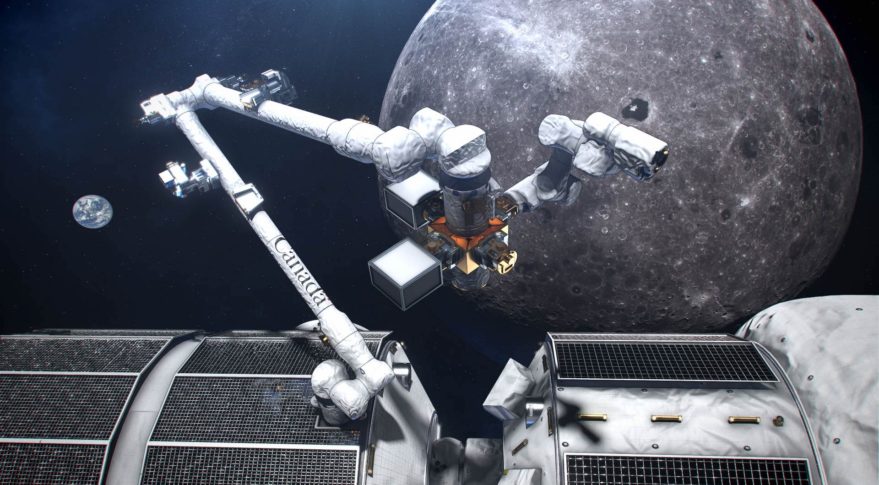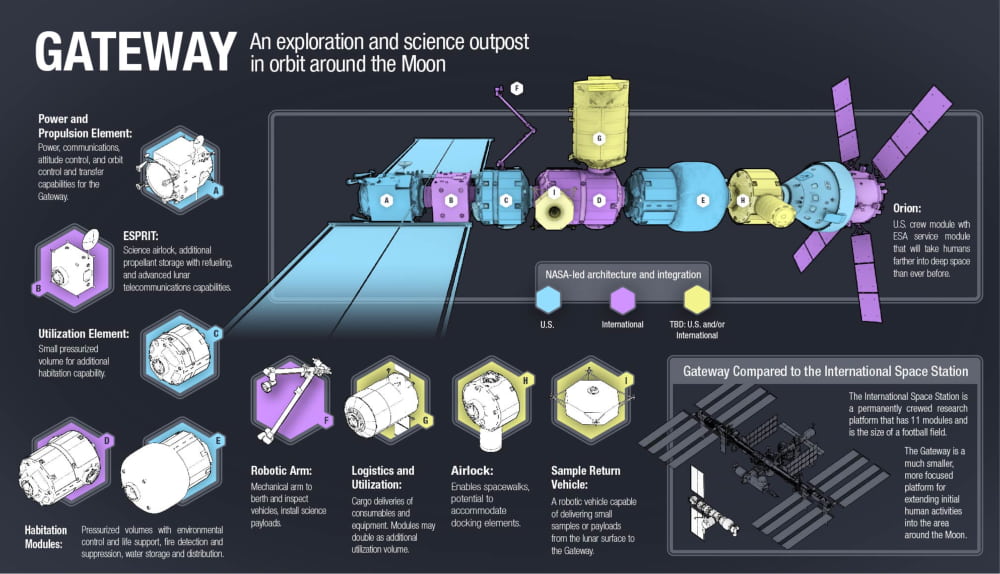 Credit: CSA/NASA
Credit: CSA/NASA
The Canadian government has established a new partnership with the United States for the NASA-led Lunar Gateway project. It also unveiled its latest Space Strategy, reaffirming Canada as a major spacefaring nation and sets bold visions by designating space as a “strategic national asset”. The 22-page document is embodied by three thematic points, with Imagination as the pivot to Exploration and Innovation. A reinvigorated space program merits the input of Canadian students and young professionals.

The Lunar Gateway project represents the next major destination for the international space community, and Canada has an important role to play. Orbiting the Moon, the station will be much farther than the International Space Station orbiting Earth. It takes on average 2.5 seconds for a round-trip signal from Earth to Moon. Away from Mother Earth, this poses new challenges requiring autonomous systems. The next generation of Canadian robotics will be driven by artificial intelligence to fulfill this role. Scientists and engineers will also gain a better understanding of the space environment and its impact on astronaut’s health.
Gateway: Proposed modules and preliminary design (Credit: NASA)

Junior Astronauts program by the Canadian Space Agency (Credit: CSA)

Moon: A Pathway to Mars (Credit: SETI Institute)
The $150M committed to the Lunar Exploration Accelerator Program paves the way for scientific experiments and technology development on or around the Moon. The Strategy also calls for an update to regulatory frameworks and to strengthen commercial opportunities. With JAXA and Toyota vying for the Moon, there’s potential for others to leverage space. This sets an interesting precedence but one that is not unique – space is more accessible than ever. Perhaps Canada’s superclusters can also build synergy across the industry and with the Canadian Space Agency.
“As for me, I am tormented with an everlasting itch for things remote. I love to sail forbidden seas, and land on barbarous coasts.” – Herman Melville, Moby-Dick



